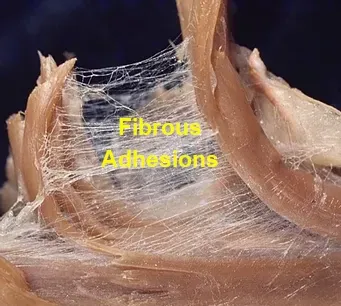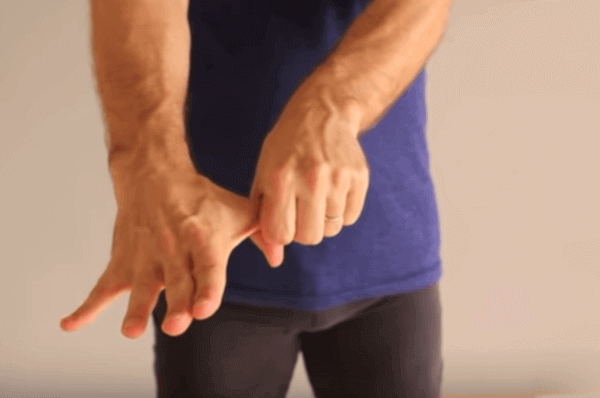The fingers (from the knuckles to the fingertips) can develop adhesions simply through everyday living. And if you work your hands hard, adhesions develop more easily and abundantly.
This finger stretch pulls the flexor tendons from the wrist to the fingertips. It essentially strips off any adhesions that have formed on the tendons in between those areas.
Do this stretch by interlacing your fingers as shown. Then rotate your wrists so your palms are facing away from you. Straighten your elbows and hold the stretch for 5 seconds. Relax and then repeat. Then shake out your hands.







